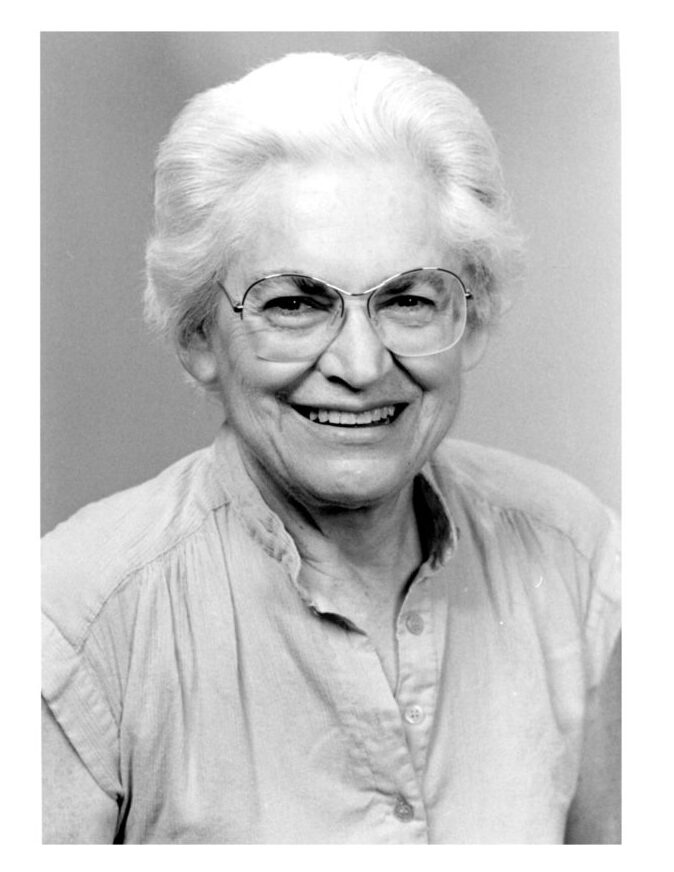Can you measure enlightenment? Loevinger’s stages of ego development
The quest for enlightenment is ancient. Often shrouded in mysticism, it’s been referenced across cultures and traditions in many ways: nirvana, transcendence, Plato’s allegory of the cave, or salvation. Or, more recently in the west, as ego death or self-actualization.
Discussions about enlightenment typically center on attaining it. But scientists want to know: can you measure it?

In this post, we’ll look at Loevinger’s stages of ego development and the effort to quantify enlightenment in terms of the ego and its development: that voice in our heads that we sometimes feel we can’t live with, but almost certainly can’t live without.
How exactly is ego measured?
Jane Loevinger first developed a psychometric test to measure what she called “ego development” while working as a researcher at Washington State University in the 1960s.

Participants were given sentences to complete, such as “Being with other people…” or “A good boss…” Loevinger then analyzed the responses to determine how the ego made sense of experiences.
The ego’s primary function is to interpret our experiences and make sense of them. Loevinger theorized that the ego matured and evolved throughout life as a result of the self’s experience with the outside world and its ongoing efforts to make sense of it.
Susanne Cook-Greuter, who later built on Loevinger’s work, calls the ego, “the tireless organizer, interpreter, and synthesizer of experience. Its task is to turn experience into a coherent narrative about the world. How does it do that? It does so by telling a culturally influenced story about who we are, why we are here, and for what purpose.”
Loevinger’s stages of ego development
In her book, Ego Development: Conceptions and Theories, Loevinger described nine distinct stages of ego development.
- Pre-Social
- The ego during infancy. The focus is on meeting basic needs, like sleeping and eating.
- The ego during infancy. The focus is on meeting basic needs, like sleeping and eating.
- Impulsive
- Much of childhood takes place in this stage. Behavior is driven by emotional impulses and bodily needs in the present moment.
- The ego can distinguish between the self and the non-self. Though uncommon, people can remain in this stage throughout adulthood.
- Self-Protective
- Behavior at this stage is less impulsive and marked by greater self-control.
- An understanding of cause and effect underlies a worldview defined by avoiding punishment and seeking rewards.
- People at this stage of ego development tend to be manipulative and opportunistic.
- They blame others when things go wrong to protect their ego.
- Conformist
- This stage is defined by the seeking of group membership and approval. There is an awareness of societal norms: how others act, look and talk, and of one’s insecurities.
- The ego compensates by finding ways to see the self as superior and clings to those comparisons.
- What is right and wrong is simple and clearly defined by whatever the group thinks, and failing to live up to the group’s expectations induces shame.
- This stage is typical in adolescence, but many people remain at this stage into adulthood.
- Self-Aware
- There is a growing sense of self-awareness at this stage. Slowly, a sense of self with unique motives, values, and beliefs emerges as distinct from what society (or whatever group this person has conformed to) has prescribed.
- The person at the self-aware stage sees that being a part of a group doesn’t mean thinking and feeling the same way as other group members and that this is okay. There is thus a greater acceptance of what makes the self and others unique.
- At the same time, the increased sense of self-awareness can make a person more aware of their insecurities. They will continue to strengthen their ego by finding ways to compare themselves favorably to others.
- This is the most common stage for American adults.
- Conscientious:
- A person at the conscientious stage bases decisions and actions on their own personally determined standards and principles. They pursue achievements aligned with their ideals.
- While someone at the conformist stage feels shame for not living up to the group’s expectations, a person at the conscientious stage feels guilt for failing to live up to their expectations.
- Deeper self-awareness enables a more accurate understanding of one’s motives and emotions. This, in turn, allows for greater empathy and conscientiousness for others and their experiences
- Individualistic
- At the individualistic stage, rich self-knowledge and an enhanced sense of individuality lead to unique forms of self-expression. Psychologist Robert Kegan refers to this as “self-authoring.”
- Greater self-knowledge creates an awareness of one’s own inner conflicts and contradictions, and an appreciation for the existence of these conflicts and contradictions in others as well.
- Reality looks increasingly complex. An understanding of the ways that circumstance and individual differences shape behavior makes the application of universal rules and judgments complicated, and perhaps impossible.
- Moralism gives way to a greater tolerance for the individuality of oneself and others.
- Autonomous
- The autonomous stage is characterized by the embrace of individuality, both of the self and others.
- This person places a premium on inner fulfillment, authenticity, and self-expression, as opposed to outer achievement. The value placed on materialism and wealth tends to decrease.
- There is a fundamental shift in the perception of conflict. Conflict is appreciated and accepted. It is seen as an inevitable expression of the ever-shifting, dynamic nature of human beings and reality in general.
- This stage roughly aligns with Maslow’s concept of self-actualization. Very few people reach this stage during their lifetimes.
- Integrated
- At this stage, Loevinger wrote, a person “exhibits wisdom, broad empathy towards oneself and others, and a capacity to be aware of inner conflicts (like the individualistic ego) or to tolerate them (like the autonomous ego) and make peace with them.
- This is the highest stage of ego development; Loevinger found that it was reached by less than 1% of adults in the United States.
Taking Loevinger’s stages further
Loevinger’s work has laid the foundation for subsequent research throughout the ’90s and ’00s, with an emphasis on applying the framework to leadership development.
William Torbert, a Leadership Professor at Boston College, published an article in Harvard Business Review that links CEO performance to ego development. And Frederic Laloux, a business coach, published Reinventing Organizations: A Guide to Creating Organizations Inspired by the Next Stage in Human Consciousness, which applies much of Loevinger’s work in the context of organizational development.

Researchers have also used Loevinger’s stages to assess the ego development of political leaders. Kevin Laning, a researcher at Florida Atlantic University, found that “among political leaders, lower levels of ego development may be expressed in corruption, intermediate levels in loyalty, and higher levels in ideology.”
Laning analyzed the speech patterns of US presidential candidates between 1980 and 2008, and found that “George W. Bush was found to score significantly lower than other leaders, including his father George H. W. Bush.” Interesting.
More recently, researchers have raised the question of whether computers could be used to assess ego development. Because the ego stage is determined by analyzing language, scientists have hypothesized that big data processing techniques could be used to apply the framework to written and verbal communication.
Scary to think about? Kinda. Useful? Possibly.
Applying Loevinger’s Stages
One criticism I came across while reading up on this topic was that classifying the ego in terms of stages can be self-defeating. Hmm. I think there’s some substance to this. Though, perhaps exhibiting pride over the stage of ego development you’ve attained is indicative of your actual stage of ego development.

There is also the interesting question of how someone might become more aware if they are deeply unaware in the first place. Or, as John Cleese more irreverently puts it, “if you’re very, very stupid, how can you possibly realize that you’re very, very stupid? You’d have to be relatively intelligent to realize how stupid you are.”
Cleese is referring to the Dunning-Krueger effect (he refers to Dunning in the video), which refers to the phenomenon in which under-performers overestimate their abilities because they lack the competence necessary to be aware of their incompetence (yeah, I know, think about that one for a second).
I don’t think this is a deal-breaker for Loevinger’s work. She found that most individuals were capable of exhibiting awareness and understanding of one level above their current stage. However, I do believe it underscores the importance of seeking knowledge and feedback, and of course, staying curious.
Still, this isn’t easy and requires effort, and it may explain why most adults will never develop past stages 4-6, and less than 1% of the population will ever reach the 9th or “Integrated” stage.
Loevinger’s work is also not readily useful for the average person. Unlike the Meyer’s Briggs test (or any other popular personality survey) to get accurate data, the questionnaire, known as the WUSCT, must be administered, coded, and analyzed by a psychologist or trained professional.
This framework is certainly not perfect. But I think it’s a good starting point for reflection and self-evaluation. Reading through the stages, I noticed that I was trying to place myself in a bucket. I certainly can remember being an impulsive kid, or a conformist-obsessed teen.
Thinking critically about ego development can help point us in the right direction on our journeys of growth and development.

Further reading
- Read about egocentric bias and how our ego works both to keep us alive and creates the illusion that we’re each at the center of the universe
- Learn more about the Dunning-Kruger Effect in this NYT article.
- Check out this podcast episode from Jay Shetty on strategies we can use to develop our egos

